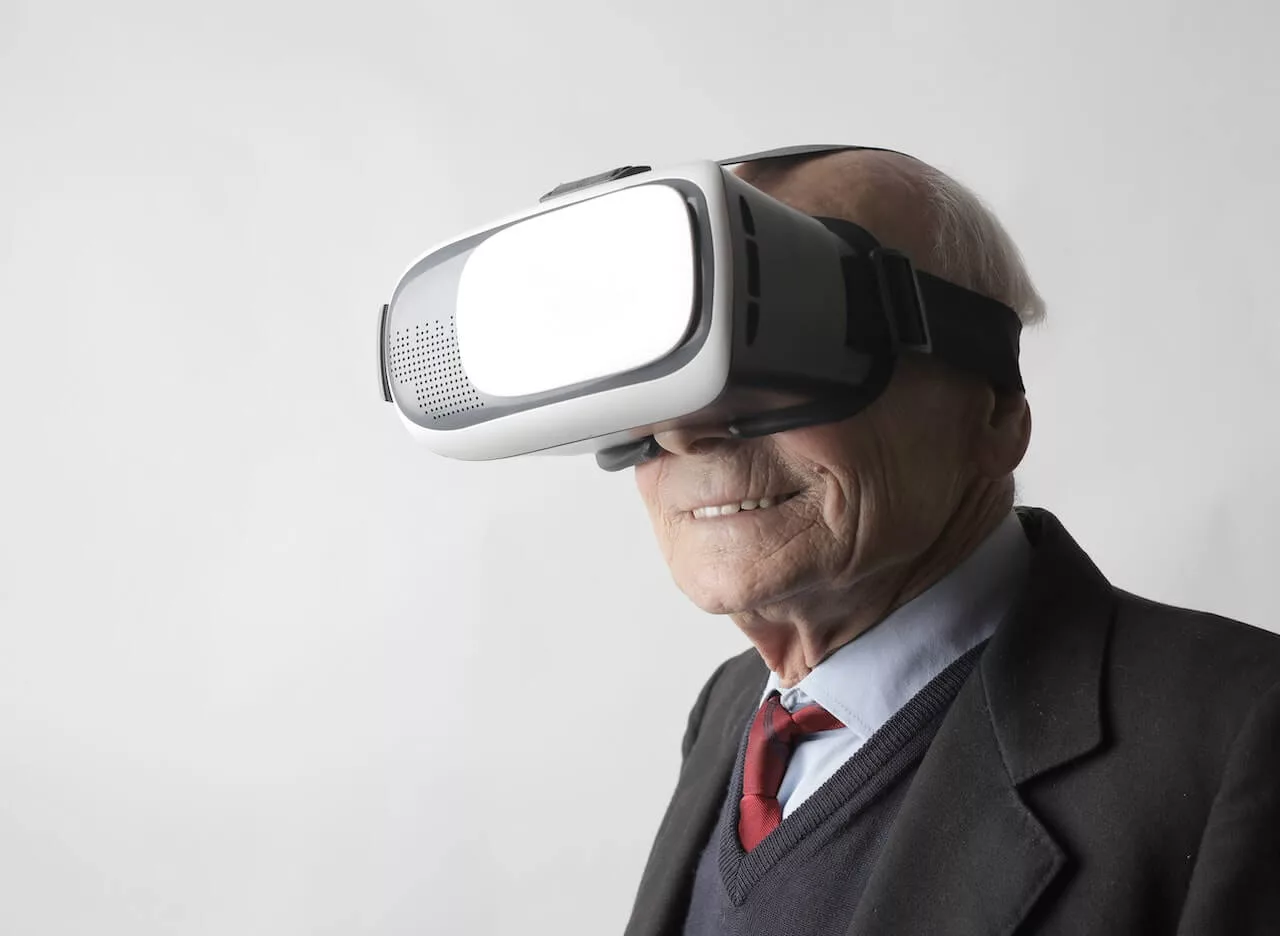The COVID-19 pandemic has forced people all over the world to adapt to a new reality. From homeschooling to working from home to celebrating milestones remotely, technology has made difficult situations more bearable.
Despite all these good reasons to adopt new technologies, fear of the unknown remains strong. For people over 65 who have lived happily without smartphones and online shopping for the vast majority of their lives, there is a considerable degree of resistance to learning and using new technologies.
Even as more daily tasks move online — from banking to scheduling doctors’ appointments — the elderly tend to be the last to make the move and many prefer to continue operating “the old-fashioned way.”
The Digital Divide
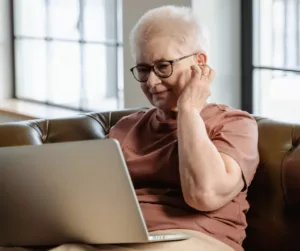
A recent study exploring the impact of COVID-19 on the elderly discovered that older people are much less likely to be proficient in technology and are therefore missing out on the opportunities technology can provide. In what’s known as the “digital divide,” there is a significant gap in both access to technology and general use of technological tools among older populations as compared to younger people.
That being said, a 2018 survey by the National Poll on Healthy Aging did report that 49% of 65-80-year-olds surveyed had set up an online portal with their healthcare provider. Of those who did not, 62% said it was because they did not want to discuss health concerns online and 47% said they are not comfortable with technology.
With mixed messages coming from the elderly, there were many predictions that this population would suffer doubly from the pandemic — both from the disease itself and the repercussions of isolation worsened by the inability or lack of desire to use technology.
Crossing the Digital Divide: The Positives

Since the onset of the pandemic, there has been a surprisingly positive response from the elderly population. They have proven themselves both capable of and willing to overcome challenges and learn how to use technology.
In a survey of Medicare-eligible seniors, only 10% of respondents had used telemedicine before the pandemic. This is in contrast to 58% who have turned to telemedicine at least once during 2019. And, of those who haven’t used it, 68% didn’t have the need for it, but otherwise would be open to telemedicine.
In addition to telemedicine, the elderly have also come on board with using online portals and other tools and apps to:
- Schedule appointments
- Track and monitor their own progress post-op
- Get information about medications
- Communicate with a surgeon or other provider
While the use of these tools was already on the rise pre-pandemic, the reality of lockdowns accelerated their adoption dramatically.
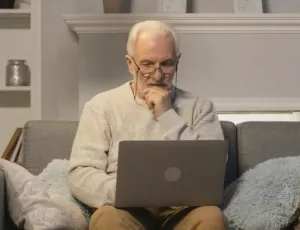
Some of our clients have seen first-hand the positive impact that technology has had on their elderly patients over the past year. Heather Bedell, Assistant Director of Mendelson Kornblum Orthopedic and Spine Specialists in Warren, Michigan reported an uptick in patients’ usage of their telehealth portal, with 80% of appointments moving to telehealth early on in the pandemic.
Heather said that they expected to see more pushback from elderly patients, but instead, they found them willing and eager to jump on board and learn to use the new technology.
In the beginning, they heard a lot of comments like “Hang on, I have to get my daughter to help me log in.” With some patience and (remote) hand-holding, the majority of patients are now able to use the technology fluidly, ensuring that they continue to get top-quality care even during quarantine and lockdowns.
While not always ideal, the general consensus among the medical community is that virtual visits are a good way to ensure patients can access ongoing care without putting themselves at unnecessary risk of exposure.
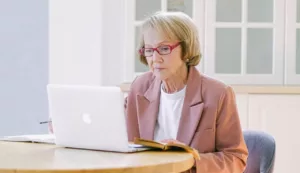
From the patients’ perspective, the prevailing opinion is also positive, particularly as virtual visits remove transportation challenges.
In addition, some elderly patients would prefer a virtual visit than struggle with communicating through a mask — something which is particularly difficult for the hard of hearing who rely on lip-reading.
What is becoming more clear over time is that the elderly are perhaps more adaptable than we give them credit for. When push comes to shove, they are putting aside the fear and distrust and are embracing technology across the board, including and especially in the realm of healthcare.
Crossing the Digital Divide: The Negatives
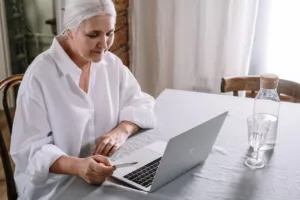
On the flip side, the move to telehealth has not been a positive experience for everyone. Some studies show that up to 40% of the elderly feel unprepared to make the move. Even for those who are comfortable with it, there are still some distinct disadvantages, as pointed out by some physicians.
Virtual visits do not lend themselves to a thorough physical exam nor can they allow for the development of the fullest patient-doctor relationship. Doctors reported the lack of a physical exam as the key challenge to virtual visits.
Without physically touching a patient, doctors can either miss important indicators of disease or order unnecessary tests out of extreme caution. While online conversations are better than nothing, the trust that should exist between doctor and patient is hard to foster via a screen.
This point was driven home by another Surgimate client, Jeff Baird of Willamette ENT in Salem, Oregon, who expressed the view that “technology can become a barrier between provider and patient”.
Elderly patients, more than others, crave the personal touch that is missing in the online consultation.
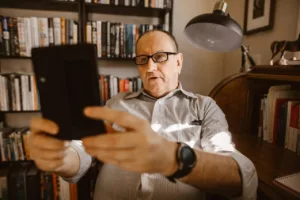
In addition, surgical practices use many different systems, each with its own purpose. Asking someone who is already uncomfortable with technology to access multiple systems to set up a profile, confirm an appointment, or pay a bill is setting the stage for failure and non-compliance.
Jeff fears too much technology in the healthcare system will be a turn-off for patients, ultimately backfiring and preventing access to care.
Finding the Balance
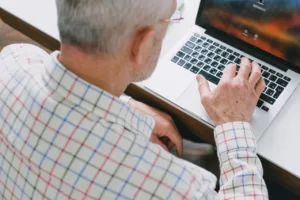
As with many things in life, the answer lies in finding a balance — not excluding the use of technology in healthcare completely but neither relying on it for everything.
In a time of uncertainty, any tool that provides peace of mind and access to care that would otherwise be unavailable is to be welcomed. The elderly should be admired for their willingness to overcome fears and adopt new technologies.
At the same time, we must not become complacent and allow technology to replace good old-fashioned human interaction, particularly when it comes to the critical physician-patient relationship.
- Sari Nossbaumhttps://www.surgimate.com/author/sari/
- Sari Nossbaumhttps://www.surgimate.com/author/sari/
- Sari Nossbaumhttps://www.surgimate.com/author/sari/
- Sari Nossbaumhttps://www.surgimate.com/author/sari/
